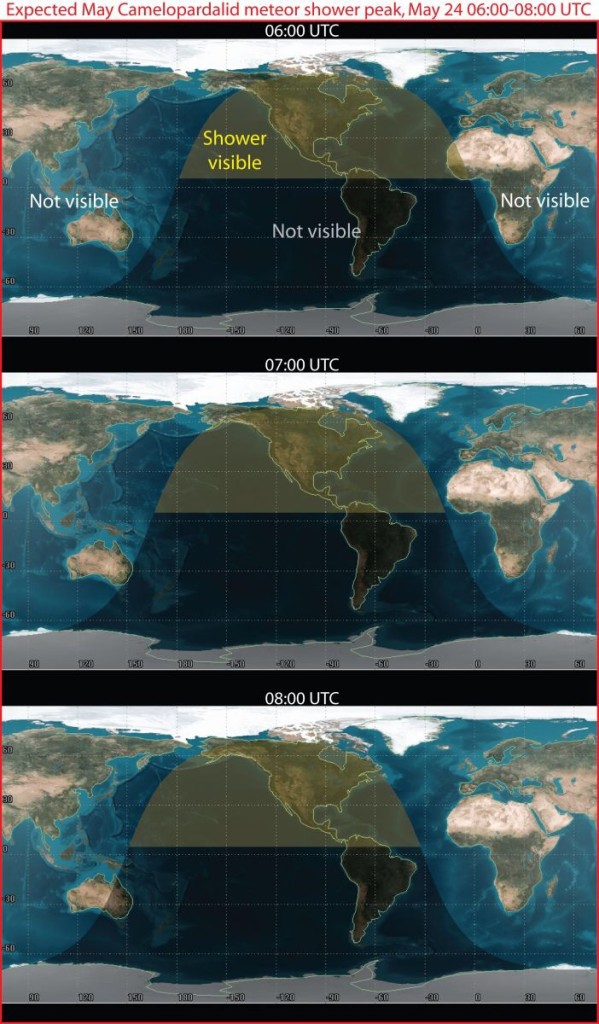A new, and possibly huge, meteor shower — the Camelopardalids — will be reaching its peak tonight (May 23, 2014) sometime right around 2-4am (EDT), for those of us in the continental US. To be clear, by “the night of”, I mean the very early morning hours of May 24, 2014.
Current predictions are that the meteor shower could reach a peak rate of up to 1000 meteors an hour (when seen from a very dark location) — a more likely peak rate though will probably be between 100-200 meteors an hour. In other words, a very nice meteor shower. 🙂
As noted above, the new meteor shower will probably best be see from the continental US and Canada. But, as we reported previously, “these things are hard to predict, so regardless of where you are in the Northern Hemisphere, it’s probably worth it to take a look outside once the skies get dark enough.”
“Some forecasters have predicted a meteor storm of more than 200 meteors per hour,” explains Bill Cooke, lead for NASA’s Meteoroid Environment Office. “(But) we have no idea what the comet was doing in the 1800s. The parent comet doesn’t appear to be very active now, so there could be a great show, or there could be little activity.”
“We expect these meteors to radiate from a point in Camelopardalis, also known as ‘the giraffe,’ a faint constellation near the North Star,” Cooke said. “It’s a great opportunity to see a new meteor shower — an opportunity I want to see with my own eyes.”
Some things to keep in mind, that should improve your meteor shower watching experience:
• Watch from the darkest location that you can, the further away that you are from city lights, the better — dark, rural locations are ideal.
• Try to get comfortable — reclining chairs, blankets, warm clothes, pillows, etc, all help.
• Warm coffee, hot chocolate, or tea, also help to make the experience more enjoyable as well. 🙂
To keep tabs on the other celestial events of the year you can download this annual calendar of celestial events! (It’s a free PDF).

Image Credit: NASA

